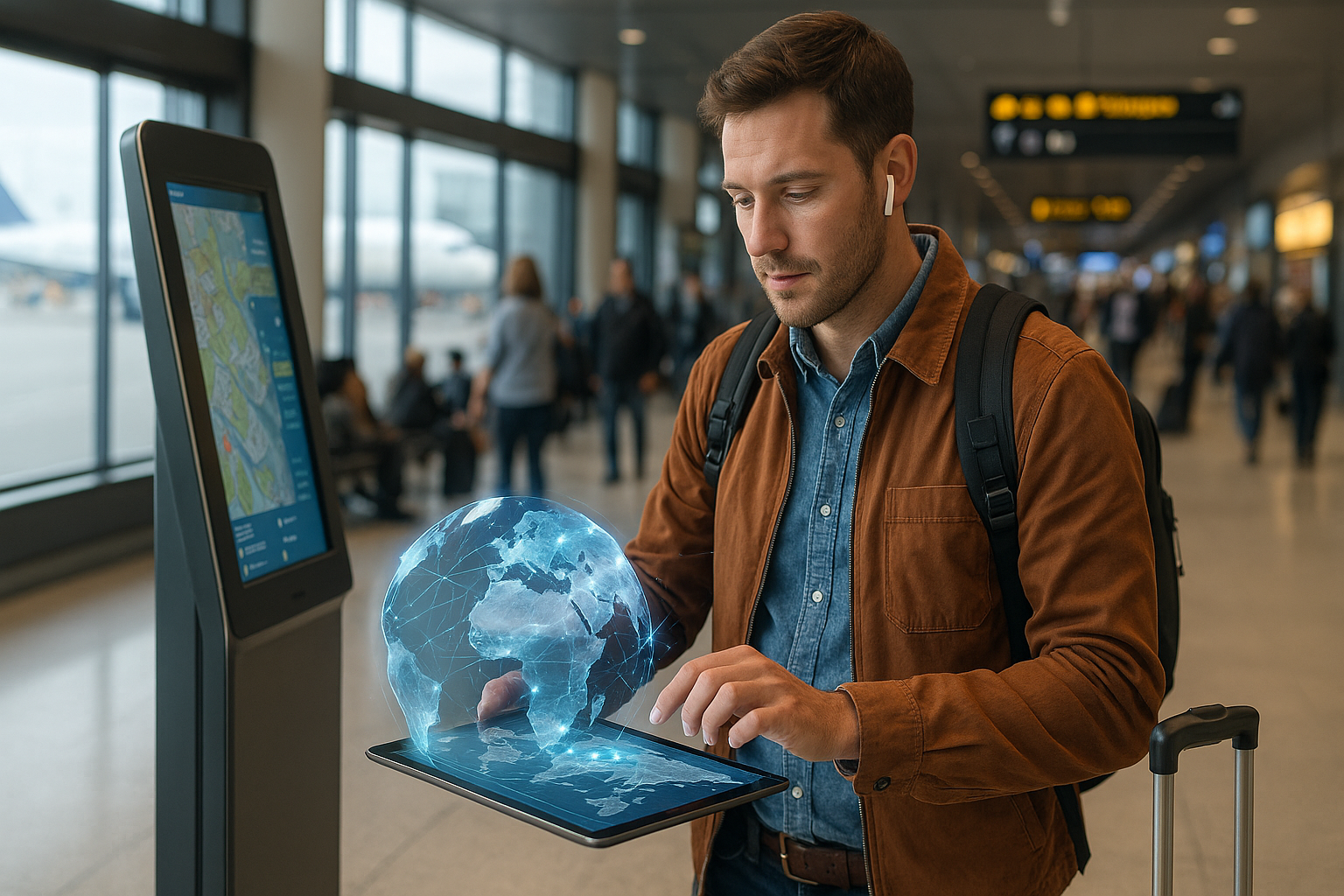How Emerging Tech is Changing the Way We Travel

Top 10 Travel Tech Trends to Watch in 2025
The travel industry is in the middle of a massive transformation, and technology is leading the way. From planning to post-trip engagement, digital tools are making travel more personalized, efficient, and immersive.
This change is about more than convenience. Today’s travelers expect experiences that adapt in real time to their needs and interests. Whether it is a museum visit enhanced by augmented reality or a smart travel assistant powered by AI, technology is redefining how we connect with places and cultures.
Here are 10 key travel technology trends that are shaping the future of tourism in 2025 and beyond.
AI and Machine Learning
Artificial intelligence is no longer limited to simple chatbots. Today’s AI travel assistants can:
- Analyze booking history and search behavior
- Make personalized recommendations
- Predict preferences using advanced data patterns
For example, an AI assistant planning your New Zealand trip might suggest hiking trails based on your past interest in outdoor adventures.
Machine learning makes these systems smarter over time, fine-tuning suggestions with every interaction. This not only improves the traveler’s experience but also helps travel companies streamline operations and increase efficiency.
Self-Guided Tours
Self-guided tours let travelers explore at their own pace while still enjoying expert-level insights. Using mobile apps, geofencing, and audio guides, travelers can unlock stories as they move through destinations.
- Museums can automatically trigger audio when visitors approach an exhibit
- Cities can provide walking tours with location-based storytelling
- Cultural attractions can offer multilingual support without needing extra staff
The self-guided audio tour market is growing rapidly, projected to reach $4.8 billion by 2031. Flexibility and independence are making this format a favorite among modern travelers.
Augmented Reality (AR)
Augmented reality enhances real-world experiences by overlaying digital content. Instead of flipping through a guidebook, travelers can point their phones at landmarks and instantly access historical facts, visitor reviews, or 3D reconstructions.
- Museums use AR to animate artifacts and show how they were used in the past
- Tourist sites bring historical events to life in the very spots they occurred
- City tours offer live, interactive information on nearby attractions
AR makes cultural exploration more engaging, memorable, and fun.
Virtual Reality (VR)
Virtual reality lets travelers preview destinations before booking and even experience places they might not physically reach.
- Try out a safari or museum tour virtually before deciding
- Enable accessibility for travelers with mobility challenges
- Relive trips with immersive 360-degree video after returning home
VR bridges the gap between imagination and reality, making it both a planning tool and a way to share memories.
Automation
Automation helps travel businesses save time and focus on guest experience. Routine tasks such as:
- Booking confirmations
- Payment processing
- Customer support FAQs
- Maintenance scheduling
can now be handled by smart systems. This frees up staff to focus on creating meaningful connections with visitors.
Data Analytics
The travel industry generates massive amounts of data. With analytics, companies can:
- Predict traveler needs and preferences
- Optimize operations like flight scheduling or hotel occupancy
- Measure marketing effectiveness through conversion and engagement rates
Data-driven insights mean travelers receive more relevant recommendations, and companies improve efficiency and profitability.
Interactive Kiosks
Interactive kiosks are transforming visitor engagement at airports, museums, and attractions.
- Provide maps, attraction details, and event schedules
- Offer videos, quizzes, and games to make learning fun
- Collect feedback through quick surveys
These kiosks double as both entertainment and service hubs, helping destinations connect better with visitors while gathering valuable insights.
Push Notifications
Push notifications keep travelers informed in real time.
- Reminders for boarding gates or tour start times
- Updates on local events or weather alerts
- Personalized suggestions based on location
Studies show push notifications can boost engagement by up to 88%. When done thoughtfully, they feel like helpful reminders rather than interruptions.
Digital Collections
Cultural institutions are digitizing archives to make them accessible worldwide.
- Museums share rare manuscripts, artifacts, and artworks online
- Teachers and researchers gain easy access to resources
- Travelers can preview cultural highlights before their trips
Digital collections not only preserve history but also extend access beyond physical walls, making culture more inclusive.
Internet of Things (IoT)
IoT connects physical devices like sensors, cameras, and wearables to improve travel experiences.
- Monitor crowd levels at popular attractions
- Track environmental conditions at sensitive heritage sites
- Provide smart signage and location-aware guides
By responding to real-time data, IoT helps destinations improve safety, sustainability, and visitor flow.
Conclusion
The travel industry is becoming smarter, more interactive, and more sustainable. Whether it is AI crafting custom itineraries or AR bringing history to life, technology is no longer just an add-on. It is now central to how we plan, experience, and remember our journeys.
For travelers, this means more personalized and enriching adventures. For businesses, it means new opportunities to connect with audiences and deliver unforgettable experiences.
The future of travel is not just about where we go but how technology helps us experience the world in deeper, more meaningful ways.
Popular Products
-
 Classic Oversized Teddy Bear
Classic Oversized Teddy Bear$23.78 -
 Gem's Ballet Natural Garnet Gemstone ...
Gem's Ballet Natural Garnet Gemstone ...$171.56$85.78 -
 Butt Lifting Body Shaper Shorts
Butt Lifting Body Shaper Shorts$95.56$47.78 -
 Slimming Waist Trainer & Thigh Trimmer
Slimming Waist Trainer & Thigh Trimmer$67.56$33.78 -
 Realistic Fake Poop Prank Toys
Realistic Fake Poop Prank Toys$99.56$49.78